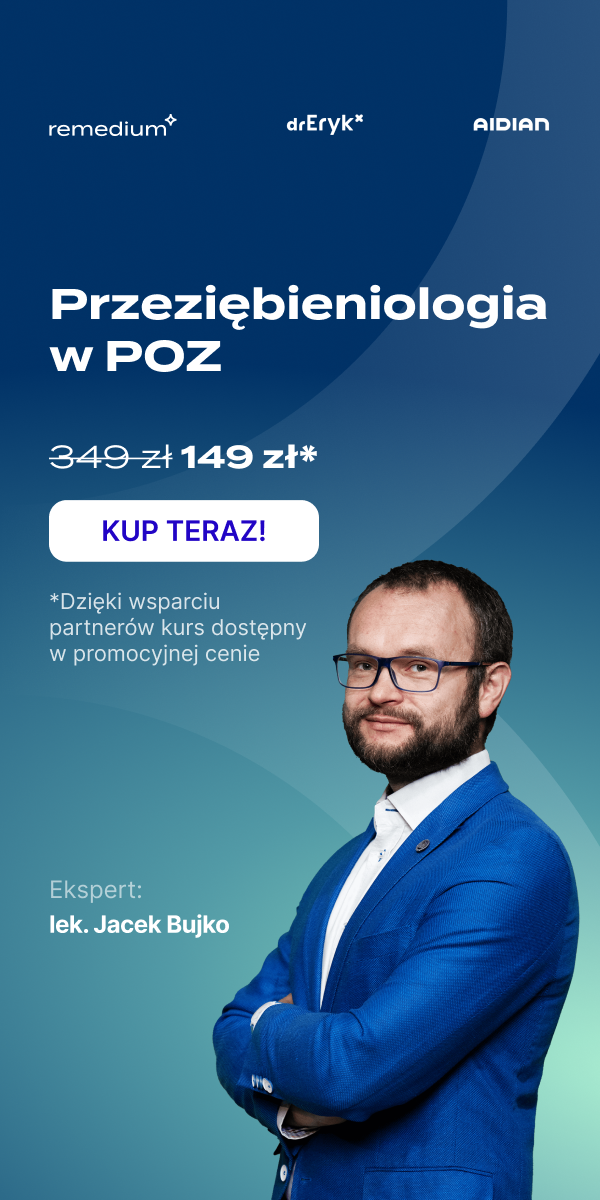Wyszukaj w publikacjach
Nowe oblicza ketaminy - psychodelik w leczeniu zaburzeń psychicznych

O użyciu ketaminy w leczeniu chorób psychicznych stało się głośno w 2019 roku, gdy FDA zatwierdziła donosowy preparat esketaminy w terapii lekoopornej depresji. W ostatnim dziesięcioleciu zainteresowanie nią wzrastało rekordowo szybko, a w samym 2020 roku opublikowano dwukrotnie więcej badań na jej temat niż łącznie w latach 1975 - 2010 [1]. Chociaż pierwotnie substancja ta znalazła zastosowanie głównie jako środek znieczulenia ogólnego podczas zabiegów pediatrycznych i weterynaryjnych, to od lat naukowcy analizują inne możliwości wykorzystania jej właściwości. I mimo że ketamina, antagonista receptorów NDMA, wciąż kojarzy się z głównie z anestezjologią, to przez blisko trzy dekady naukowcy zebrali wiele dowodów na to, że jej zastosowanie może być znacznie szersze.
Nie tylko depresja - ketamina w chorobie afektywnej dwubiegunowej
Czy nowy lek na depresję może okazać się użyteczny także w innych zaburzeniach afektywnych? Badania wskazują: ketamina wykazuje silne, szybkie i krótkotrwałe działanie przeciwdepresyjne nie tylko w depresji, ale i w chorobie afektywnej dwubiegunowej (ChAD) [1]. Efekt zauważalny jest już po kilku godzinach od podania, ale jego czas trwania wciąż trudny jest do określenia. W przypadku depresji utrzymuje się zazwyczaj 1-2 tygodnie, jednak w publikacjach dot. ChAD raportowane wartości wykazywały większą różnorodność [1]. Dotychczasowe dane na temat różnic w sile działania ketaminy w przypadku ChAD a depresji również pozostają niespójne.
Specyficznym dla ChAD wyzwaniem w użyciu nowej substancji w terapii jest jej zdolność do indukowania manii. Jak dotąd badania wykazały jednak, że jeśli występują objawy maniakalne, to ustępują zazwyczaj w ciągu kilku godzin od podania leku [1,2]. Co więcej, w jednej z meta-analiz zauważono brak różnic w częstości występowania objawów maniakalnych u pacjentów z ChAD po zażyciu ketaminy oraz placebo [3]. Warto jednak zauważyć, że poddano w niej analizie dane pochodzące jedynie z 2 badań nad terapią z użyciem tej substancji. Aktualne dane pozwalają jednak sądzić, że w obu powyższych rozpoznaniach ketamina jest efektywna i bezpieczna zarówno w formie dożylnej, jak i doustnej, donosowej i domięśniowej [1].
Ketamina jako anestetyk podczas terapii elektrowstrząsami
Anestetyk o właściwościach przeciwdepresyjnych - to połączenie czyni z ketaminy potencjalnie dobrego kandydata na dodatek do terapii elektrowstrząsowej. W 8 z 18 badań przeprowadzonych nad taką kombinacją w leczeniu dużej depresji, ChAD oraz depresji lekoopornej korzyści terapii z dodatkiem ketaminy okazały się przewyższać te z użyciem metoheksitalu, propofolu oraz tiopentalu [1]. Jej zalety szczególnie zauważalne były w przypadku depresji lekoopornej, gdzie zaobserwowano m.in. szybszą poprawę, częstsze uzyskiwanie remisji, mniejsze zapotrzebowanie na sesje elektrowstrząsów i obniżenie częstości występowania zaburzeń funkcji poznawczych [1]. Dane na temat pozostałych rozpoznań są jednak wciąż niespójne i wymagają dalszych badań.
Narkotyk czy środek wspomagający leczenie uzależnień?
Czy substancja znana jako popularny „klubowy” narkotyk może okazać się pomocna w leczeniu uzależnień od substancji psychoaktywnych? Niewykluczone - zauważono bowiem, że dodatek ketaminy do terapii awersyjnej sprawił, że po roku o 46% więcej uczestników niż w grupie kontrolnej utrzymało abstynencję alkoholową [4]. Z podobną, bo 42-procentową różnicą wiązało się dołączenie leku do psychoterapii [5]. Obiecujące, chociaż wciąż skąpe dane dotyczą również wspomaganego ketaminą leczenia uzależnienia od heroiny i kokainy [1]. Jak podkreślają jednak autorzy przeglądu systematycznego, który opublikowany został w tym roku w BJPsych Open, szczególnie w przypadku leczenia tych schorzeń należy liczyć się z ryzykiem nadużywania leku przez pacjentów w celach rekreacyjnych [1]. Czy rzeczywiście jest się czego obawiać? Naukowcy zaznaczają, że istotnym zadaniem kolejnych badań jest monitorowanie rzeczywistego ryzyka wystąpienia tego zjawiska.
Dalsze kierunki badań
Depresja, choroba afektywna dwubiegunowa, uzależnienie od alkoholu czy narkotyków - te przykłady nie wyczerpują bynajmniej potencjalnych możliwości wykorzystania ketaminy. W leczeniu fobii społecznej oraz zespołu lęku uogólnionego okazała się przejawiać działanie anksjolityczne [1], a w dwóch przeprowadzonych dotychczas badaniach stwierdzono zmniejszanie się pod jej wpływem objawów zaburzenia obsesyjno-kompulsywnego [6,7]. Mimo istotności, efekt ten - podobnie, a może nawet bardziej niż w przypadku depresji - jest krótkotrwały. Pod lupę wzięto także możliwość stosowania ketaminy w leczeniu zaburzeń odżywiania, ale dotychczasowe dane są niewystarczajace do wyciągnięcia wiążących wniosków [1].
Ciekawym przypadkiem wpływu ketaminy na zaburzenia psychiczne jest jej związek z nasileniem zespołu stresu pourazowego (post-traumatic stress disorder, PTSD). Dlaczego? W jednym z badań wykazano, że wśród poparzonych amerykańskich żołnierzy, którzy otrzymali ketaminę podczas zabiegu chirurgicznego, PTSD występowało istotnie rzadziej [8]. Analiza przeprowadzona ponownie na większej grupie dowiodła za to, że ryzyko rozwinięcia PTSD nie jest większe w przypadku użycia ketaminy, nawet jeśli pacjenci doznali cięższych obrażeń [9]. Co więcej - użycie ketaminy w leczeniu PTSD okazało się łagodzić jego objawy [1].
Fala rosnącego zainteresowania leczniczymi właściwościami psychodelików nie ominęła również ketaminy, która wydaje się substancją o wiele bardziej wszechstronną, niż podejrzewaliśmy. Czy nowy (a właściwie „stary”, ale zyskujący nowe, intrygujące oblicze) lek znajdzie zastosowanie w terapii kolejnych schorzeń? Po niegasnącym zaciekawieniu świata nauki sądzić można, że najbliższe lata przyniosą odpowiedź na to pytanie.
Źródła
- Walsh Z, Mollaahmetoglu OM, Rootman J. Ketamine for the treatment of mental health and substance use disorders: comprehensive systematic review. BJPsych Open. 2021 Dec 23;8(1):e19.
- Romeo B, Choucha W, Fossati P, Rotge JY. Meta-analysis of short- and mid-term efficacy of ketamine in unipolar and bipolar depression. Psychiatry Res. 2015 Dec 15;230(2):682-8.
- Fornaro M, Carvalho AF, Fusco A et al. The concept and management of acute episodes of treatment-resistant bipolar disorder: a systematic review and exploratory meta-analysis of randomized controlled trials. J Affect Disord. 2020 Nov 1;276:970-983.
- Krupitsky E, Grineko AY, Berkaliev TN, Paley AI, Tetrov UN,Mushkov KA, et al. The combination of psychedelic and aversive approaches in alcoholism treatment: the affective contra-attribution method. Alcohol Treat Q 1992; 9(1): 99–105.
- Krupitsky E, Grinenko AY. Ketamine psychedelic therapy (KPT): a review of the results of ten years of research. J Psychoactive Drugs 1997; 29(2): 165–83.
- Rodriguez CI, Kegeles LS, Levinson A et al. Randomized controlled crossover trial of ketamine in obsessive-compulsive disorder: proof-of-concept. Neuropsychopharmacology. 2013 Nov;38(12):2475-83.
- Bloch MH, Wasylink S, Landeros-Weisenberger A et al. Effects of ketamine in treatment-refractory obsessive-compulsive disorder. Biol Psychiatry. 2012 Dec 1;72(11):964-70. doi: 10.1016/j.biopsych.2012.05.028.
- McGhee L, Maani CV, Garza TH, Gaylord KM, Black IH. The correlation between ketamine and posttraumatic stress disorder in burned service members. J Trauma Acute Care Surg 2008; 64(2): 195–9.
- McGhee LL, Maani CV, Garza TH et al. The intraoperative administration of ketamine to burned U.S. service members does not increase the incidence of post-traumatic stress disorder. Mil Med. 2014 Aug;179(8 Suppl):41-6.






